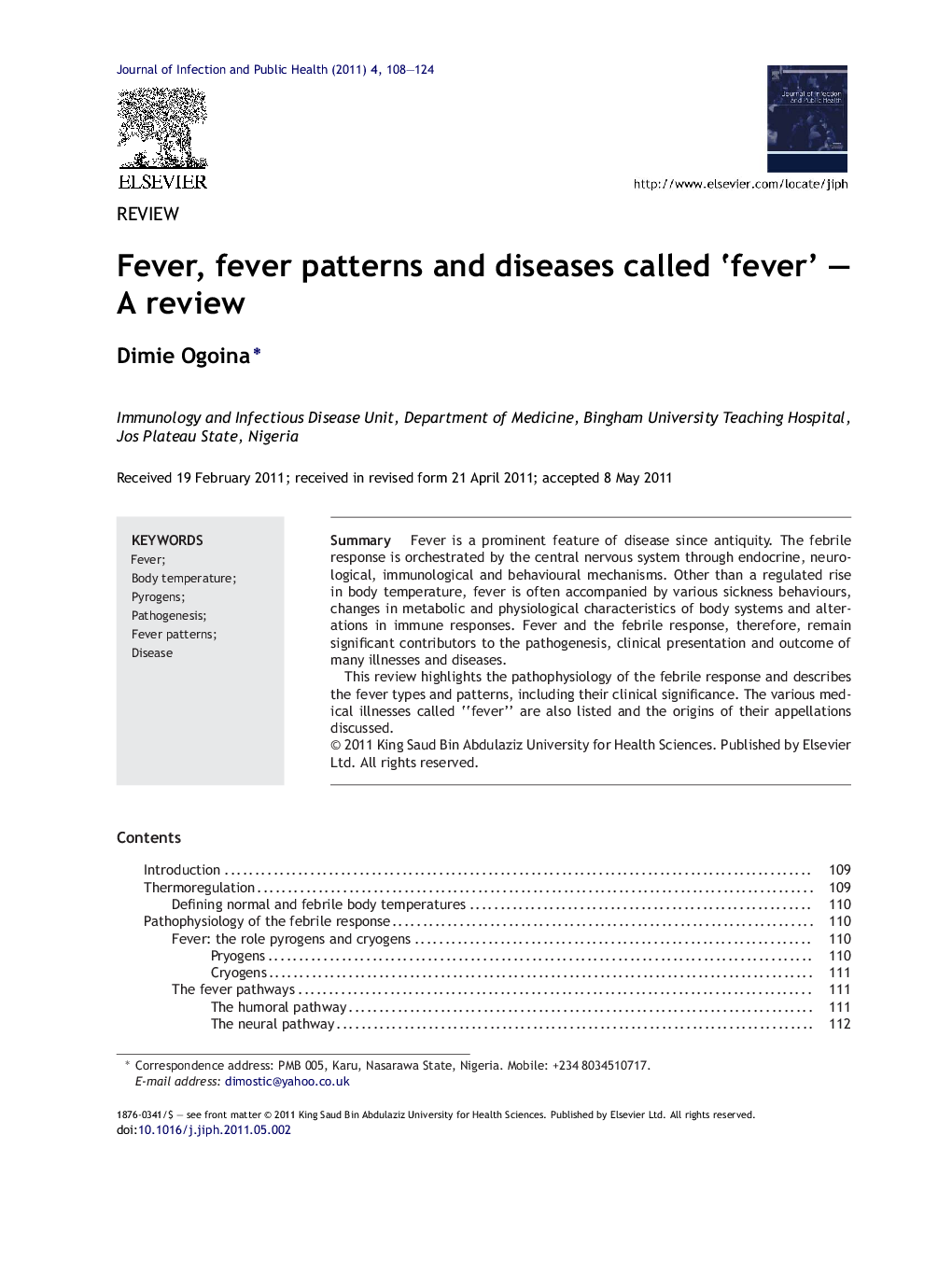| Article ID | Journal | Published Year | Pages | File Type |
|---|---|---|---|---|
| 3406119 | Journal of Infection and Public Health | 2011 | 17 Pages |
SummaryFever is a prominent feature of disease since antiquity. The febrile response is orchestrated by the central nervous system through endocrine, neurological, immunological and behavioural mechanisms. Other than a regulated rise in body temperature, fever is often accompanied by various sickness behaviours, changes in metabolic and physiological characteristics of body systems and alterations in immune responses. Fever and the febrile response, therefore, remain significant contributors to the pathogenesis, clinical presentation and outcome of many illnesses and diseases.This review highlights the pathophysiology of the febrile response and describes the fever types and patterns, including their clinical significance. The various medical illnesses called “fever” are also listed and the origins of their appellations discussed.
